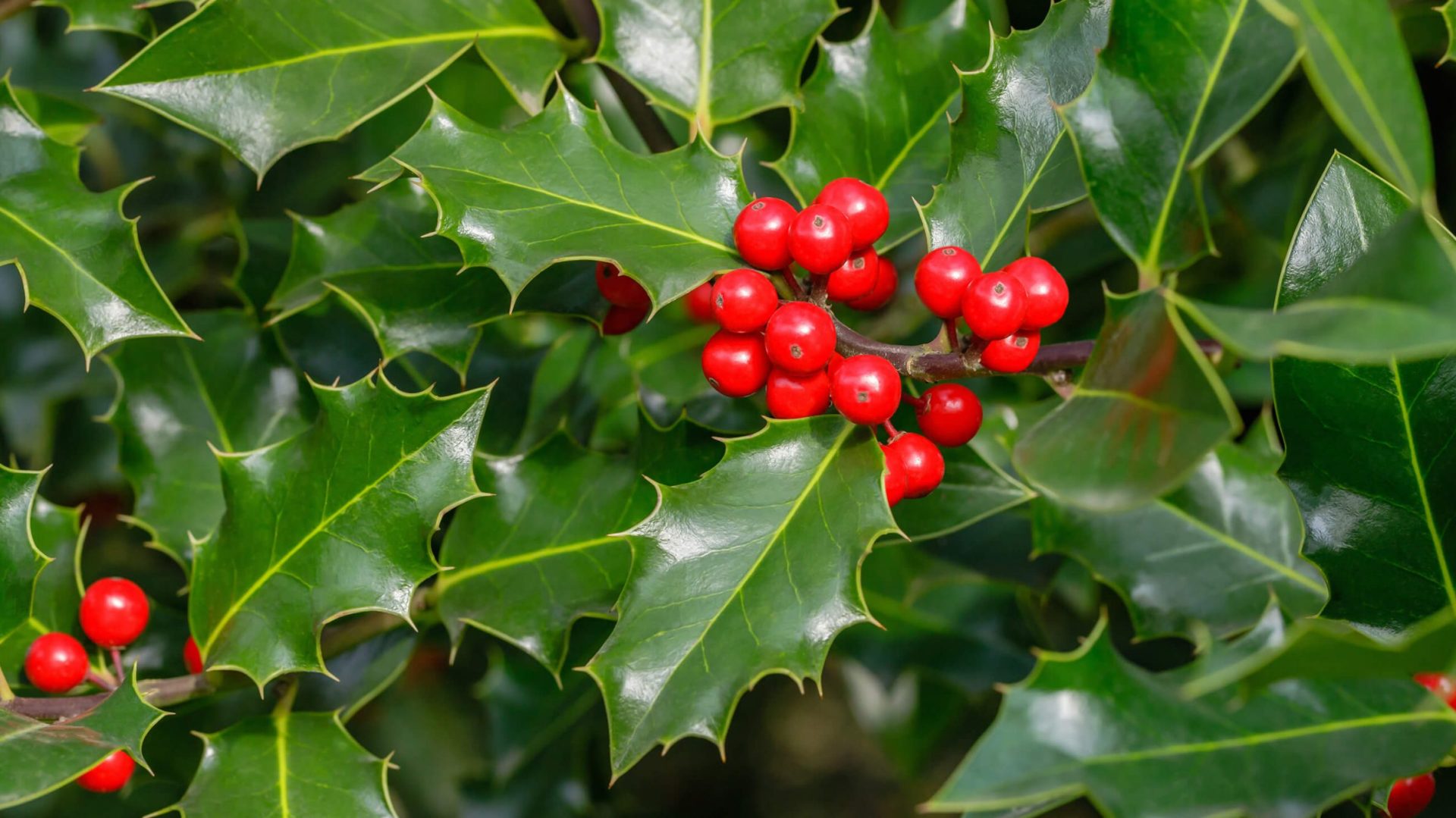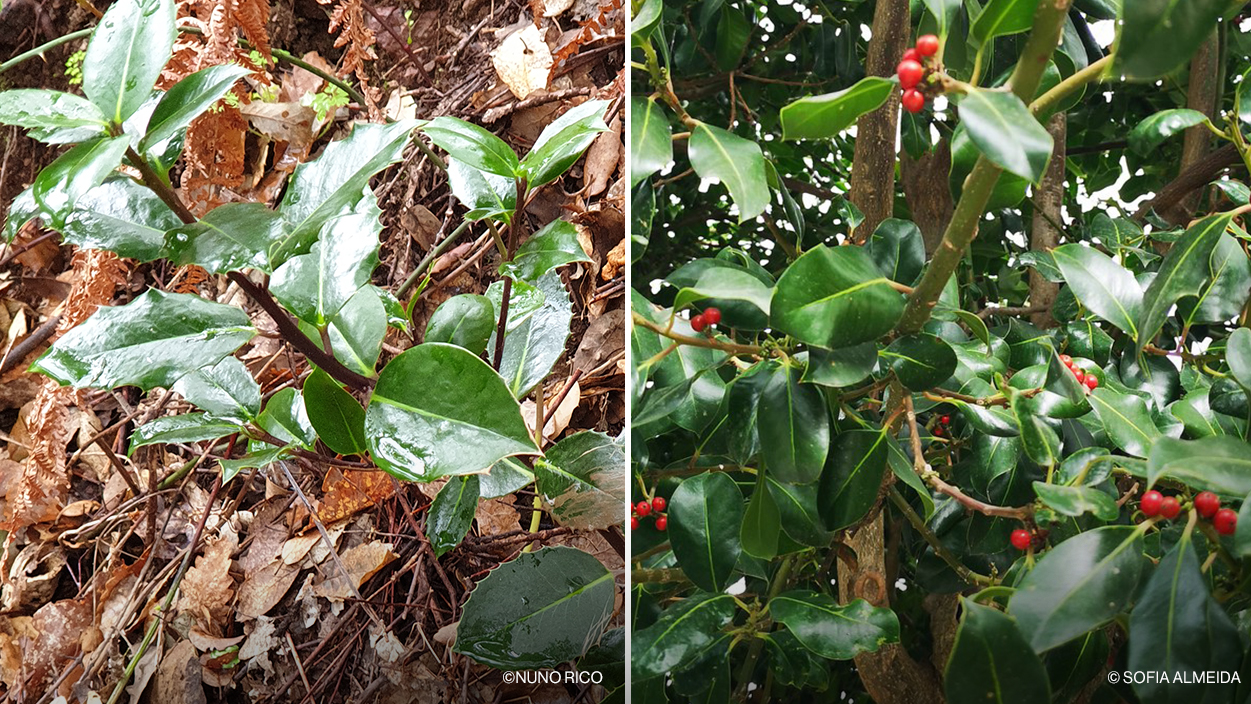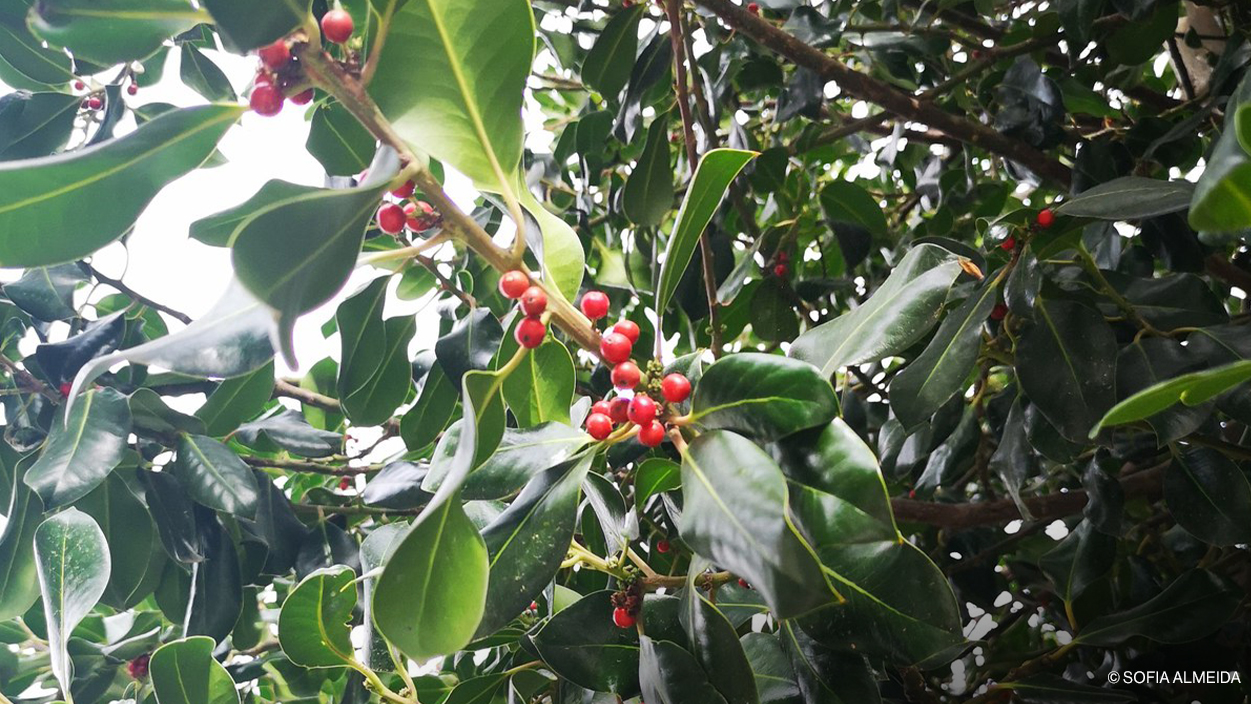The small, round fruit is deep red in colour and stands out among the dark green, glossy, jagged leaves. This is holly, an ancient species that has become a symbol of Christmas, but which the Celts worshipped centuries ago.
Holly is part of the collective imagination of a large proportion of the population, but more people recognise it from Christmas decorations than have ever seen it in nature. This is not surprising, as holly (Ilex aquifolium) is considered a relict species: a survivor of the subtropical forests (Laurissilva) that covered mainland Portugal before the Ice Age.
Although it managed to survive the intense climatic fluctuations of the Ice Age and continues to grow naturally in humid mountain areas, its presence today is much smaller than in those distant times.
In the 20th century, the excessive cutting of branches for Christmas decorations brought new pressures. To prevent it from disappearing in the wild, the uprooting and partial or total cutting of the trees, as well as transporting and selling them have been prohibited by Portuguese law since 1989. More recently, the Natura 2000 Network succeeded in establishing Ilex aquifolium forests as a natural habitat of community interest: habitat 9380. Even so, the International Union for the Conservation of Nature classifies holly as “Low Concern” on its Red List of Threatened Species.





